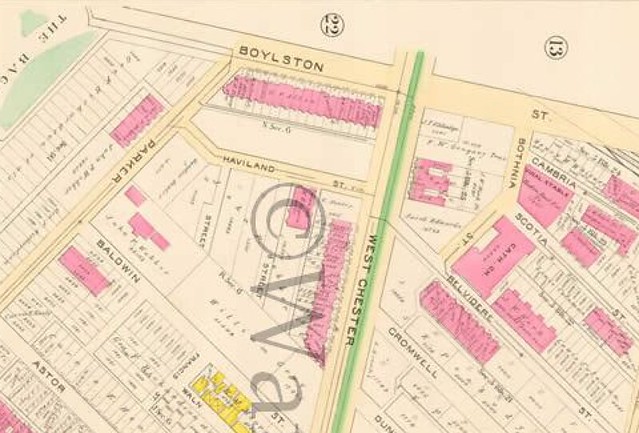A real city is about human life - - Boston needs street level windows and corner diners, pubs, etc...........
That would actually require the BPDA and BCDC to have some vision.
A real city is about human life - - Boston needs street level windows and corner diners, pubs, etc...........
kz, thanks for the pics and welcome back. Been a while since I’ve seen your terrific photography.
Due to its out of the way location, probably 99% of people who see this tower will never see its base. With a building this tall and this visible, I would put the tower's aesthetics well above whether it has a diner or 1st floor windows. This is now the city's 3rd most visible building, and will be featured in sports telecasts, commercials, postcards... Basically, in the world's window-side view of Boston, this building will be noticed.
A similar, but even (way) worse case, is the Federal Reserve. It's distinct and screams "Boston!" even though the base is an unforgiving fortress. It's highly featured in movies like The Departed. 1 Dalton will also be highly featured in due time.
Having proper street activation at, say, the cancelled tower site on the corner of Mass Ave and Boylston Street is much more important than this location will ever be. Not every nook and cranny of the city needs street level activation.
it wouldn't be a bad thing for this city to be more inviting for human beings.
most walkable cities in america
i get, and largely agree with, your observations about the street-level experience around this building and its neighbors, but the above comment is a real head-scratcher. aside from the vast number of polls and studies that consistently peg boston as one of (if not *the*) most walkable cities in america, a simple stroll in literally any part of the area is enough to reinforce that one of boston's greatest strengths is that it is *exceptionally* "inviting for human beings." this one, very small section? yes, not a great pedestrian experience. but that's the exception to the larger rule here.
In my opinion, you are confusing what should be (and I agree with you completely) with what actually is. This building, while fantastic from a skyline point of view failed on the street level. And I suspect it's because the building's customers don't care about that. It's a helicopter sky scraper, not something that creates a bustling neighborhood.I can't agree with that at all.. The 'excitement' for a few of on this website is the Skyline impact. The excitement for actual HUMANOIDS would be at the living human sidewalk level. Real cities don't look like post-Neutron bomb events.
That "dreary street" NEEDED a life injection. Hell, it is right around the corner from where all the tourists jump aboard the Duckboats - - - what a crap sandwich to serve out of towners. That will go nowhere for Boston's reputation.
A real city is about human life - - Boston needs street level windows and corner diners, pubs, etc...........
Never noticed that row house presumably wedged between a couple office buildings here. Was this built that way on purpose or all that is remaining of many?

This doesn't mean much considering how shitty most of America's cities are.
Yep, exactly. I never drive anywhere in my neighborhood, despite it's far more suburban feel than one of the core areas. Worth noting, too, that even the "suburban" sections of Boston/Camberville are actually very housing dense compared even to core areas of most other US cities. Pretty much anywher in Boston with the exception of Readville and some parts of West Roxbury is above 10,000 people per square mile.It's also worth saying that, despite the dense suburban layout of most of Boston's (and Cambridge, and Somerville, etc.) neighborhoods outside of the core, those neighborhoods are still very walkable and pedestrian friendly for the most part, and it's relatively easy to get to a commercial district on foot from most locations. The same cannot be said of many American cities.
i mean.... that's most major cities. if you get off the tourist track in chicago and go NW on the blue line up past Logan Circle it's the same thing, and the south side is disconnected buildings and vacant lots. NYC is similar once you get out of manhattan and go east through brooklyn and queens where it starts to become more dense suburban. i can't think of any american cities that aren't nice / walkable outside of the tourist urban core.
also generally when people think of cities they've been to they're thinking of the tourist areas they've visited, not the time they spent driving through dorchester / the bronx / chicago west side to get there...
this provides a summary (it's not the actual deed), but basically: no bars, liquor stores, medical facilities, porn, or competing religious facilties on the lower floors. not being able to have a ground-floor bar/restaurant with booze really limits how inviting 1 dalton could have been made in that respect. one of the things most people like about 1 dalton is its slender proportions -- the actual footprint on the ground is pretty minimal. so, they could have a store 24 or a dunks on the ground-floor, but i think it's reasonable to concede that those types of establishments are kinda off-brand for the four seasons.
I don't know the exact restrictions that were imposed on One Dalton from the Christian Science Center, but I feel they were rather heavy enough to make it difficult to create an engaging street presence. If someone has the terms and can post them, it might be helpful for us to decide on if there was a significantly better alternative to what we got instead.
